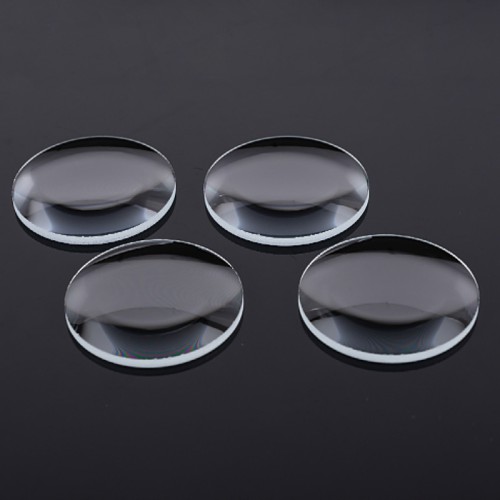Plano Convex Lens
Plano convex lenses are optical lenses with one flat (plano) surface and one convex surface. This design provides a balance between functionality and simplicity, making them versatile components in various optical systems.
Tags: Optical Lens, Plano Convex Lens
Plano convex lenses are optical lenses with one flat (plano) surface and one convex surface. This design provides a balance between functionality and simplicity, making them versatile components in various optical systems.

Key Features of plano convex Lenses:
1.Mixed Curvature Profile:
With one flat side and one curved side, plano convex lenses combine the focusing power of a convex surface with the ease of alignment offered by a flat surface.
2.Positive Focal Length:
Unlike plano concave lenses, plano convex lenses generally have a positive focal length, meaning they can converge parallel incident light rays to a point, forming a real image on the opposite side of the lens.
3.Image Formation:
Depending on the position of the object relative to the lens, plano convex lenses can form real, inverted images (when the object is beyond the focal point), virtual, upright images (when the object is between the lens and the focal point), or act as magnifiers.
4.Magnification and Focusing:
They can both magnify and focus light, making them useful in applications where detailed image formation or tight focusing is required.
5.Reduced Spherical Aberration:
The asymmetry introduced by having one flat surface can minimize spherical aberration, especially when the lens is used with the convex side facing the incident light. This is because the radius of curvature of a single surface can be optimized to balance refraction effects.
Applications of plano convex Lenses:
1.Imaging and Photography:
In cameras, telescopes, and microscope objectives, plano convex lenses are used to focus light and form clear images.
2.Laser Focusing:
They are used to focus laser beams to a small spot size, essential for applications like laser cutting, engraving, and medical procedures.
3.Optical Data Storage:
In CD/DVD readers and writers, plano convex lenses focus the laser onto the disc's surface for reading or writing data.
4.Instrumentation:
They are found in various scientific instruments and sensors where precise focusing or light manipulation is necessary.
5.Simple Magnifiers:
Due to their ability to magnify, plano convex lenses are used in basic magnifying glasses and as reading aids.
Factors Affecting Function:
- Radius of Curvature:
The curvature of the convex surface greatly influences the focusing power and the focal length of the lens.
- Material and Refractive Index:
Different materials with varying refractive indices will affect the lens's light-bending properties and its performance in different spectral ranges.
- Thickness and Diameter:
The thickness of the lens can impact its ability to handle different wavelengths without introducing distortions, and the diameter affects the amount of light that can be gathered.
Related Products
Biconvex Lens
A biconvex lens is a type of lens with two convex surfaces, meaning both sides curve outward like th..
Plano Concave Lens
Plano concave lenses are another type of optical lens with distinct characteristics compared to bico..


